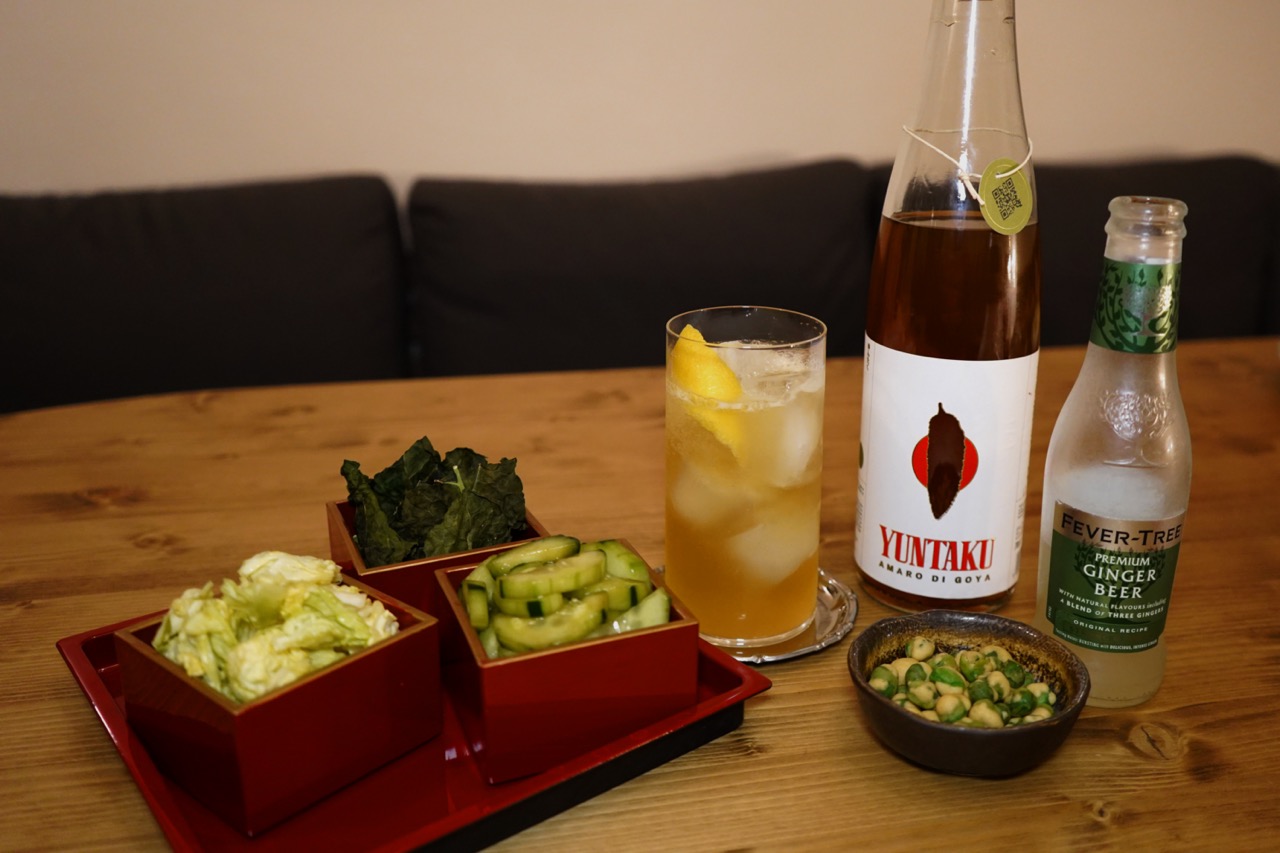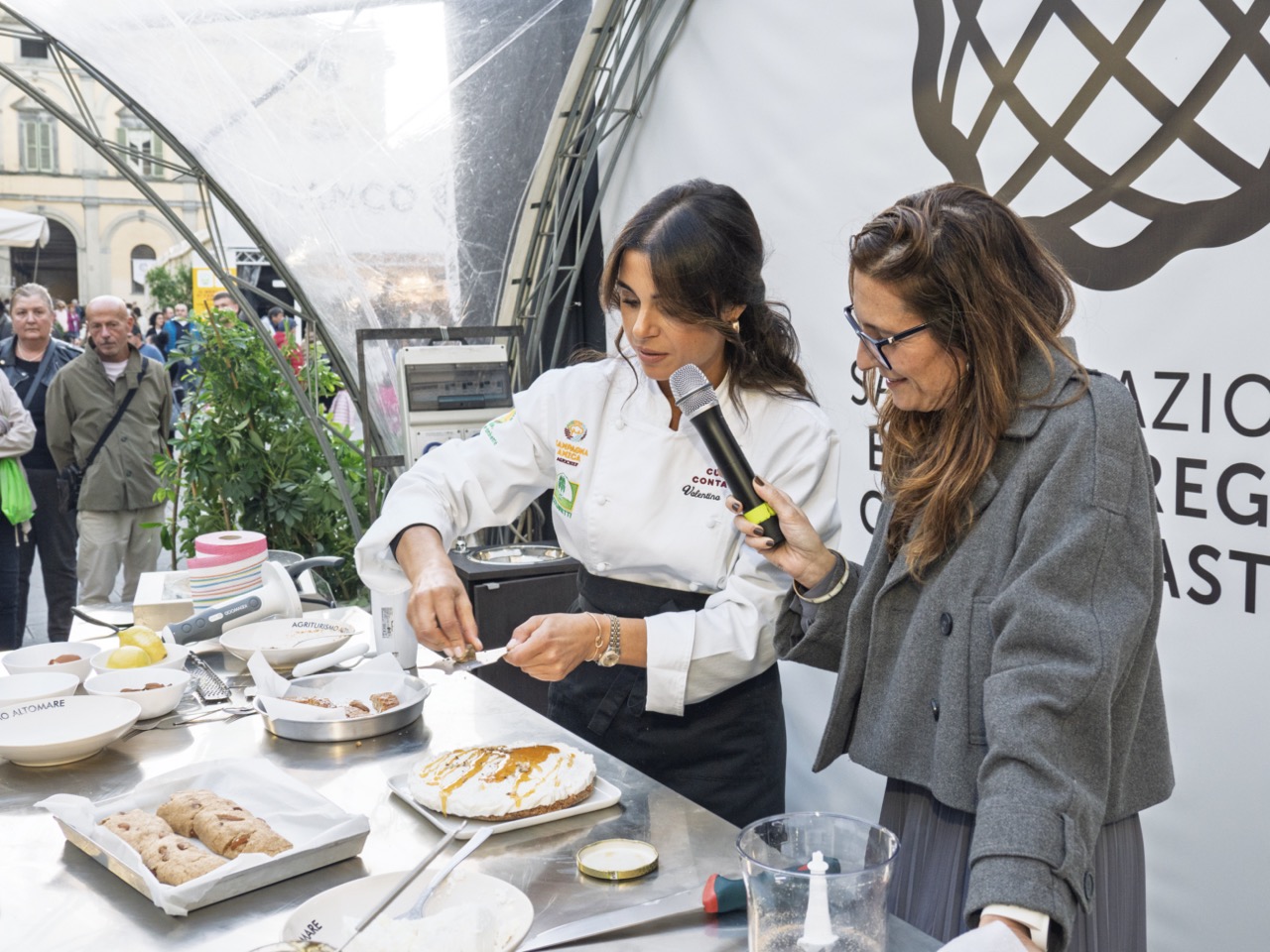The Story of Poli Distillery
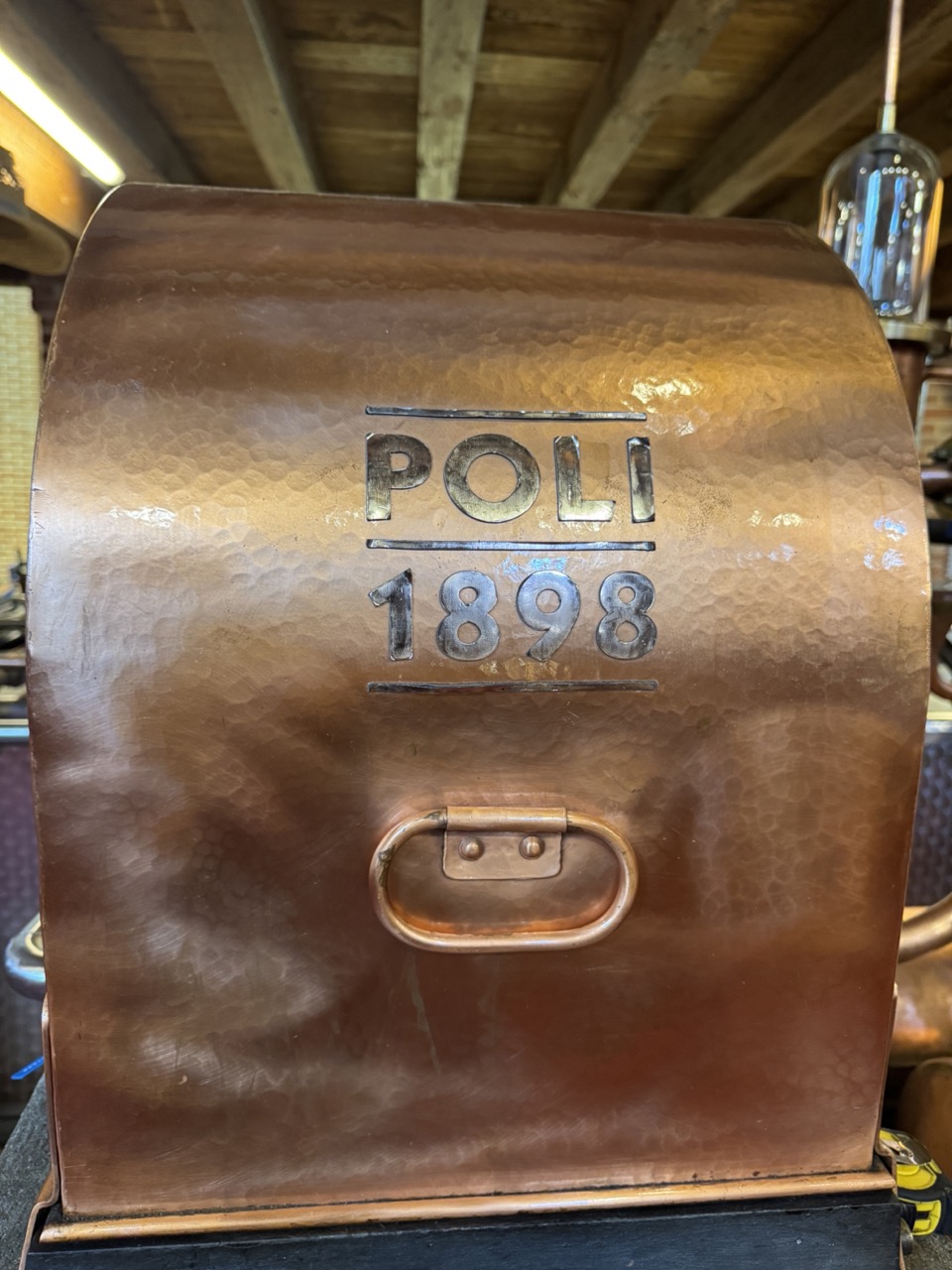
You can’t talk about the Poli family without first understanding the land they come from. The distillery—and indeed the Poli dynasty—roots itself in Schiavon, a small village nestled at the foot of Monte Grappa, just a few kilometers from the renowned Bassano del Grappa—the home of the Poli Grappa Museum. As the name suggests, this is the heart of Italy’s premier grappa-producing region.
Arriving in Bassano reveals a living, vibrant historical city, gracefully positioned on the Brenta River beneath Monte Grappa. It is the final hilltop before the pre-Alpine range—a natural crossroads between plains and mountains. Its strategic location has long made it a commercial and cultural hub. With pristine landscapes, easy access, and rich heritage, Bassano is a highly captivating tourist destination. The city’s aperitivo culture also runs deep, with artisan bars crafting their own bitters for the aperitivo time.
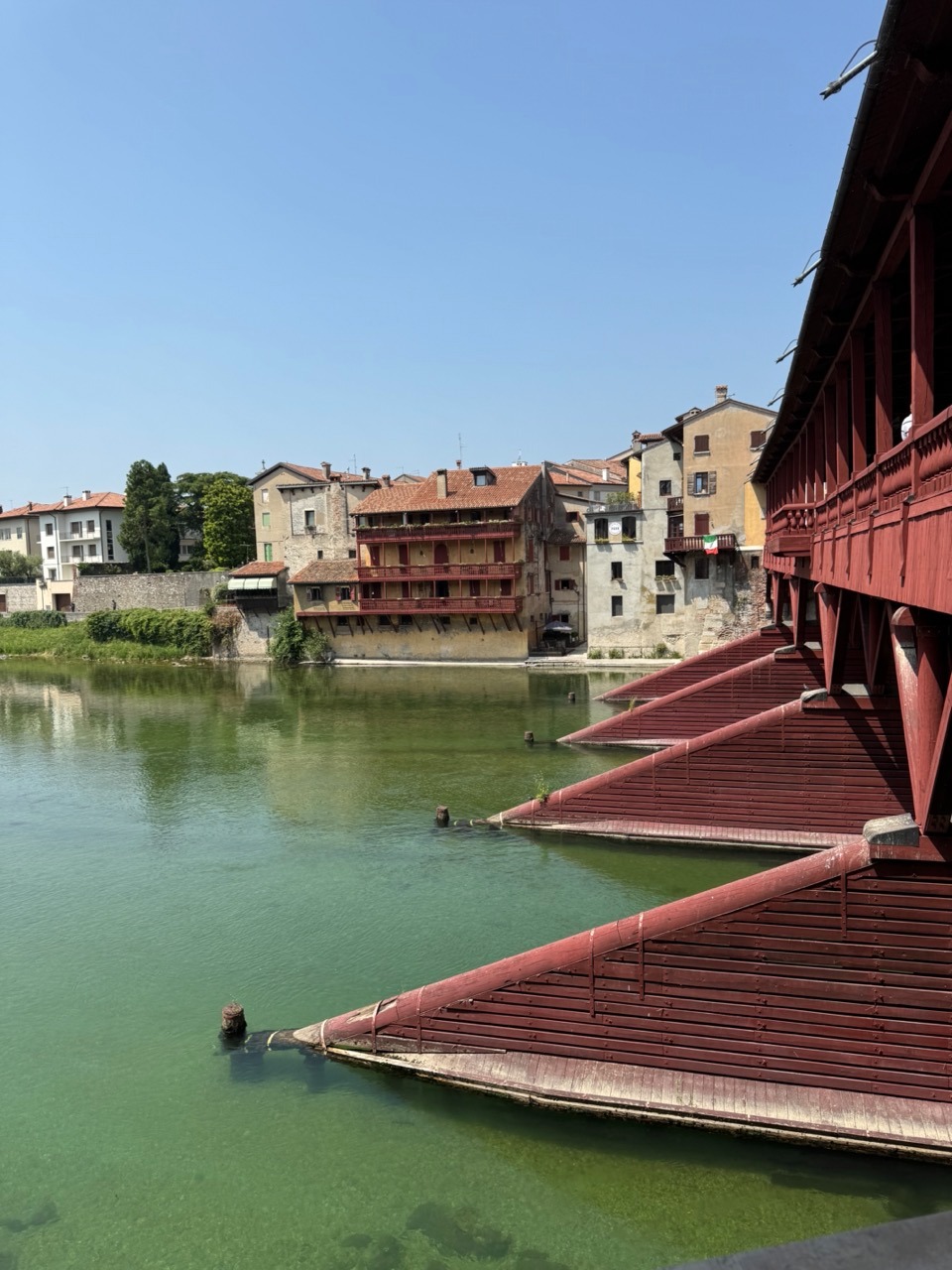

The Origins of the Poli Family
The Poli story began modestly, almost romantically, in a tavern at Schiavon’s train station. Opened on January 15, 1885 by GioBatta Poli, it sold wine, beer—and even straw hats. The turning point arrived in 1898, when GioBatta added a mobile still and started distilling pomace in surrounding towns.
That same year, the distillery took shape permanently, installing the still beside the old waiting room. From that point on, grappa production has never ceased.
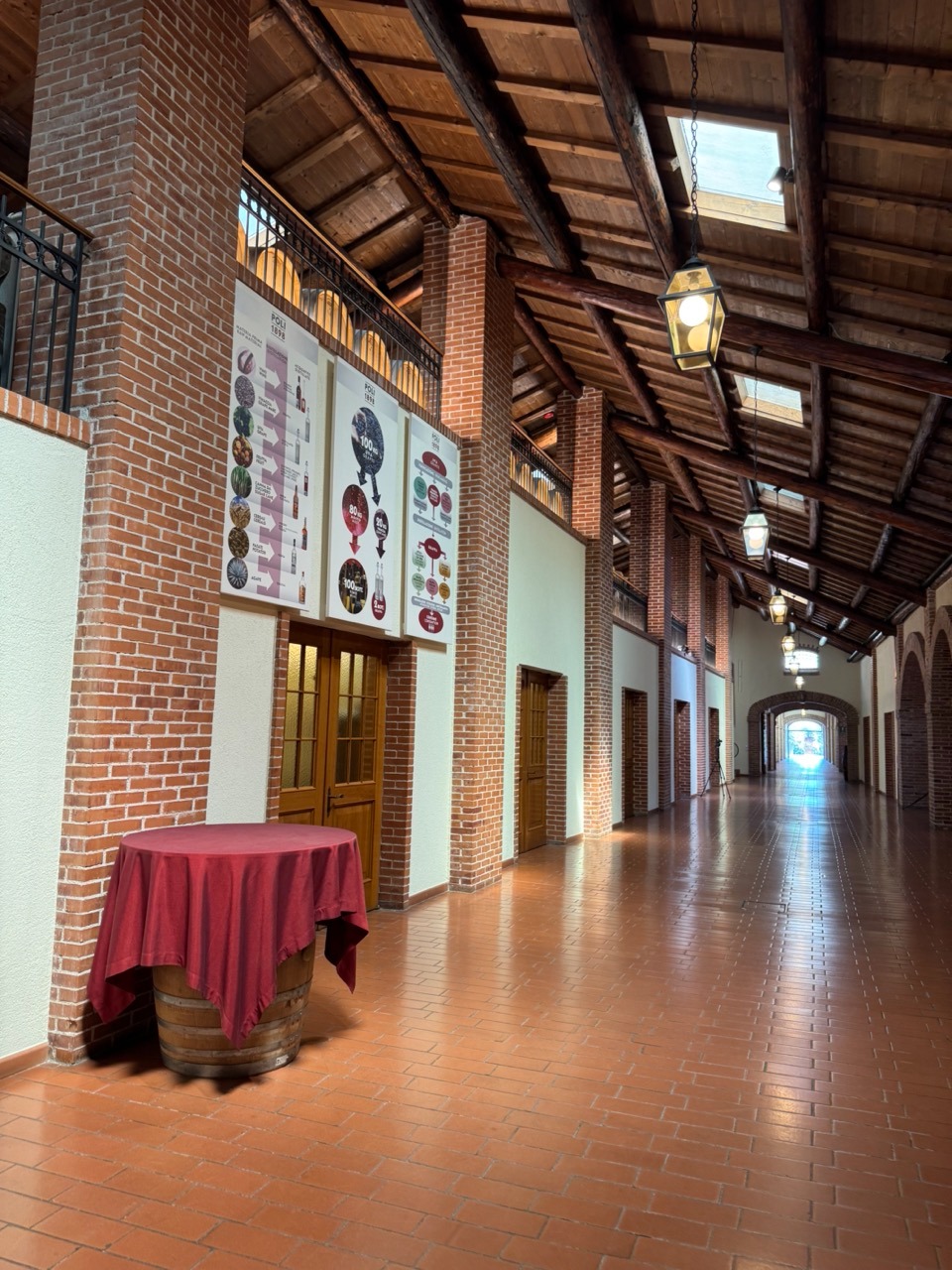
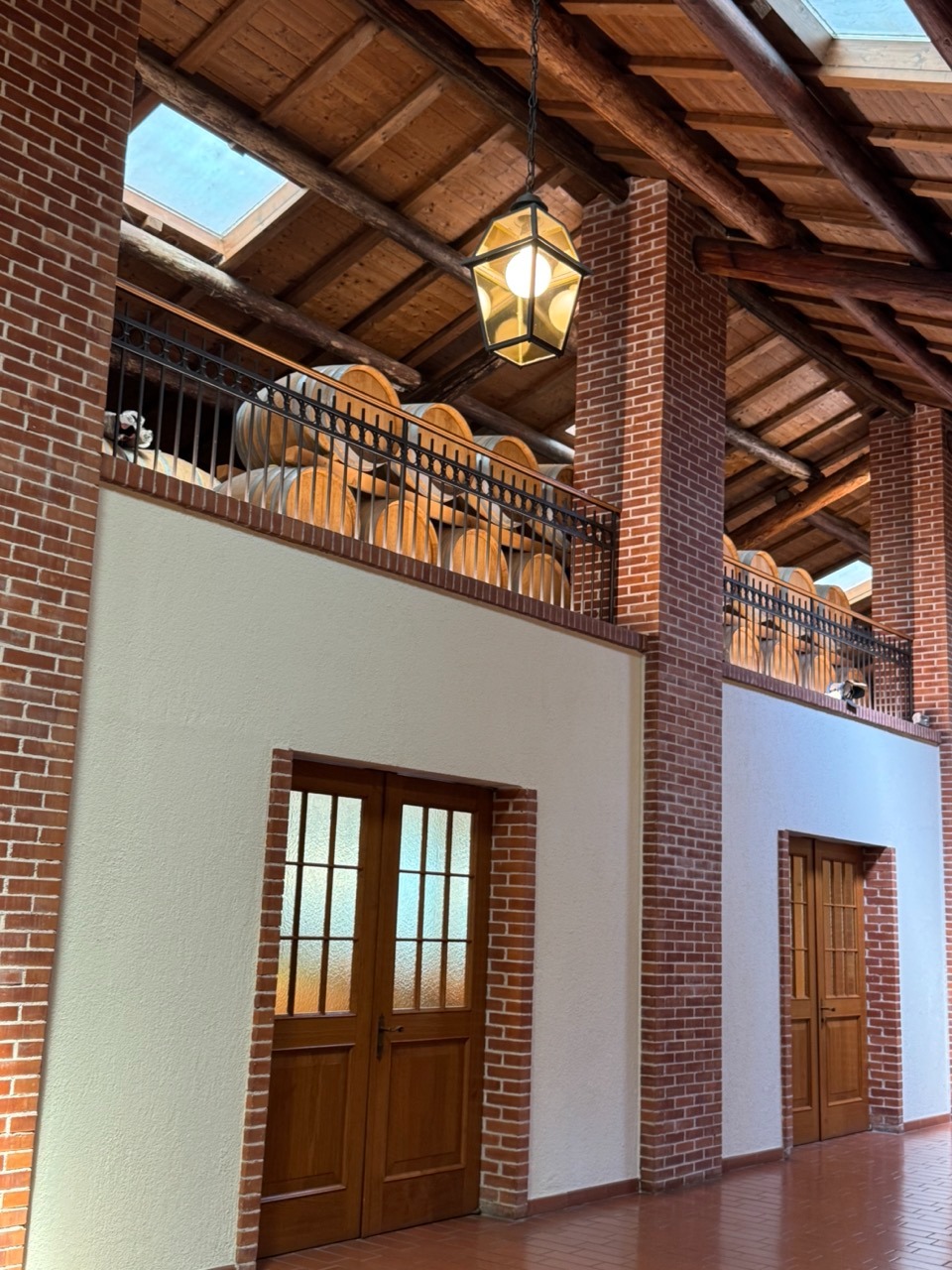
The Artisan Grappa Crisis
Starting in the 1960s, traditional grappa producers faced a harsh crisis. The advent of continuous-cycle stills allowed large distilleries to produce at lower costs and higher efficiency. Over 90% of Italian artisan distilleries closed under this pressure.
The Poli family also suffered. Competition, a devastating fire, and an exceptional snowfall severely damaged their facility. Yet Antonio Poli and his wife Teresa Parma refused to give up. They rebuilt, invested in new machinery, increased capacity, and kept the distillery alive.
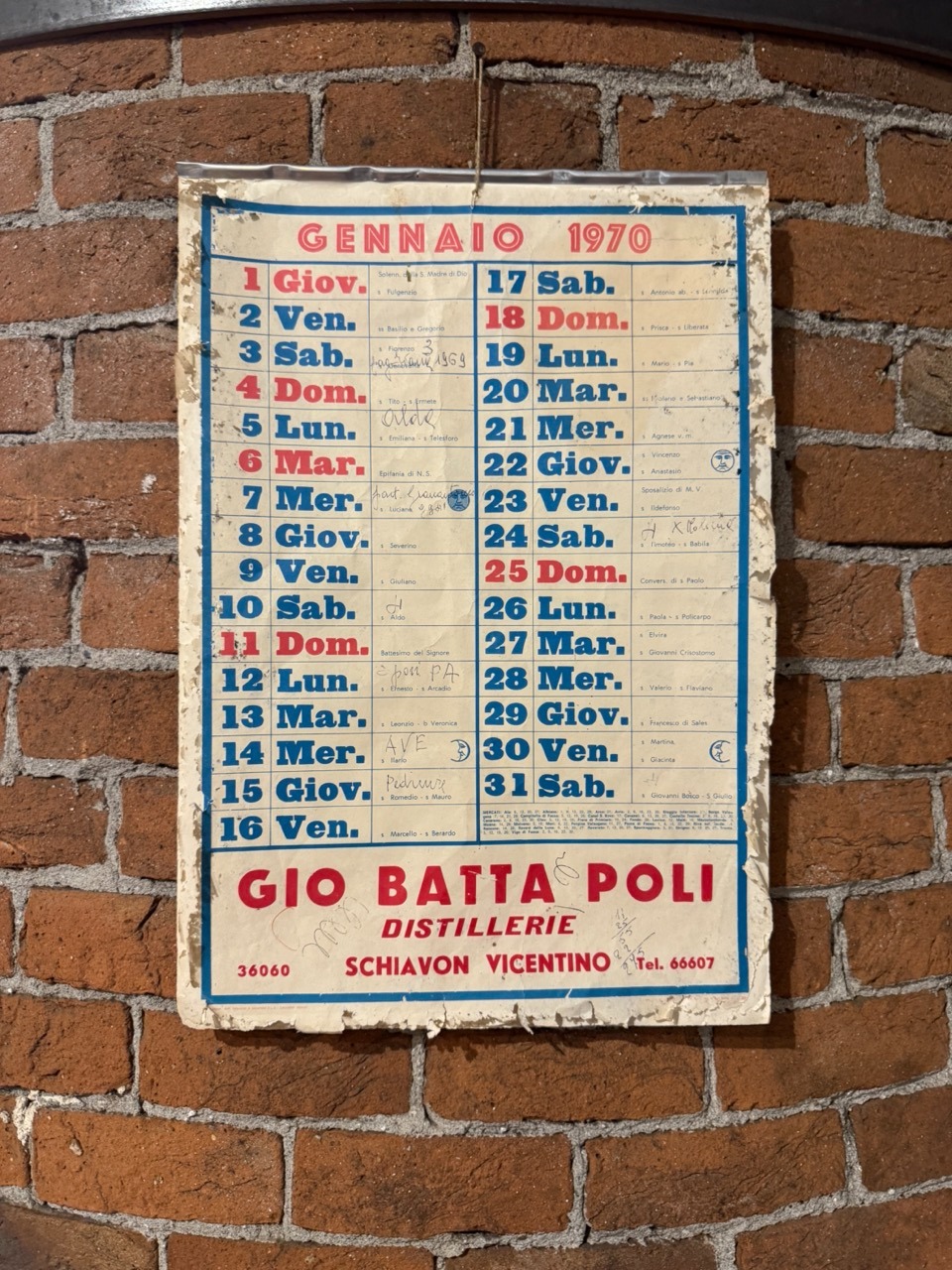

The Turning Point: Craftsmanship & Monovarietal Grapes
True renewal came in the 1980s with the fourth generation: Jacopo, Giampaolo, Barbara, and Andrea. They transformed the distillery, focusing on craftsmanship: small batches, monovarietal pomace, and obsession with the “heart” of the distillate. Quantity gave way to quality.
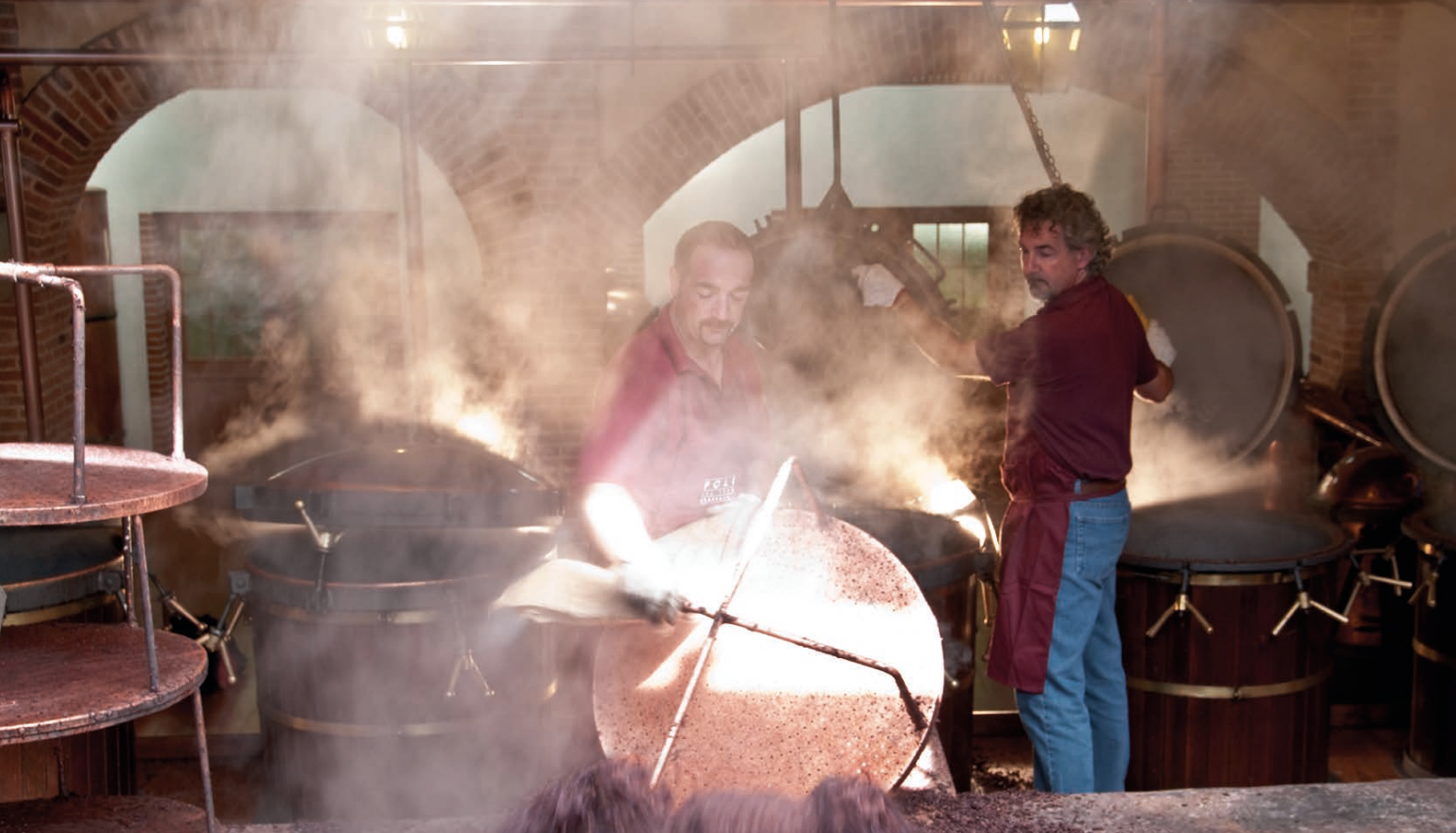
In 1982, they acquired new steam stills—doubling capacity—while preserving the batch process. The result: a softer, more elegant, round grappa. The shift was so clear that even their initially skeptical father Toni ceded control.
In 1986, the Amorosa line was born, made from Vespaiola grapes—an indigenous variety—symbolizing territorial identity. In the early 1990s came Grappa di Sassicaia, crafted from vinacce of the famed Stilton’s Chardonnay, Sicily’s Sassicaia. The Poli brothers recognized that the market was ready for premium, thoughtful grappa—and success soon followed.
In 1993, the Poli Grappa Museum opened in Bassano’s Palazzo delle Teste, with the mission of promoting grappa culture worldwide.
The Distillery Today
The original Schiavon facility still stands on the site of the old train waiting room. Upon entering, the scent of aging barrels greets you; just inside, on the left, lies the working distillery.
Production remains strictly batch-style: each batch contains 40 kg of fresh pomace in the still basket. The alcohol evaporates, rises through the distillation column, and condenses in the cooling coil. A skilled distiller then isolates the “heart” of the distillate, discarding the heads and tails.
Each batch uses only one type of pomace, and the equipment is cleaned meticulously daily—a seamless blend of craftsmanship and production quality.
Today, Poli operates 12 steam stills, 2 traditional water-bath stills, and 2 vacuum water-bath stills (developed in collaboration with the Agricultural Institute of San Michele all’Adige). Their range now extends far beyond grappa: they also craft amari, liqueurs, gin, vermouth, and even whisky matured in Amarone barrels, offering aromatic complexity and surprising depth.
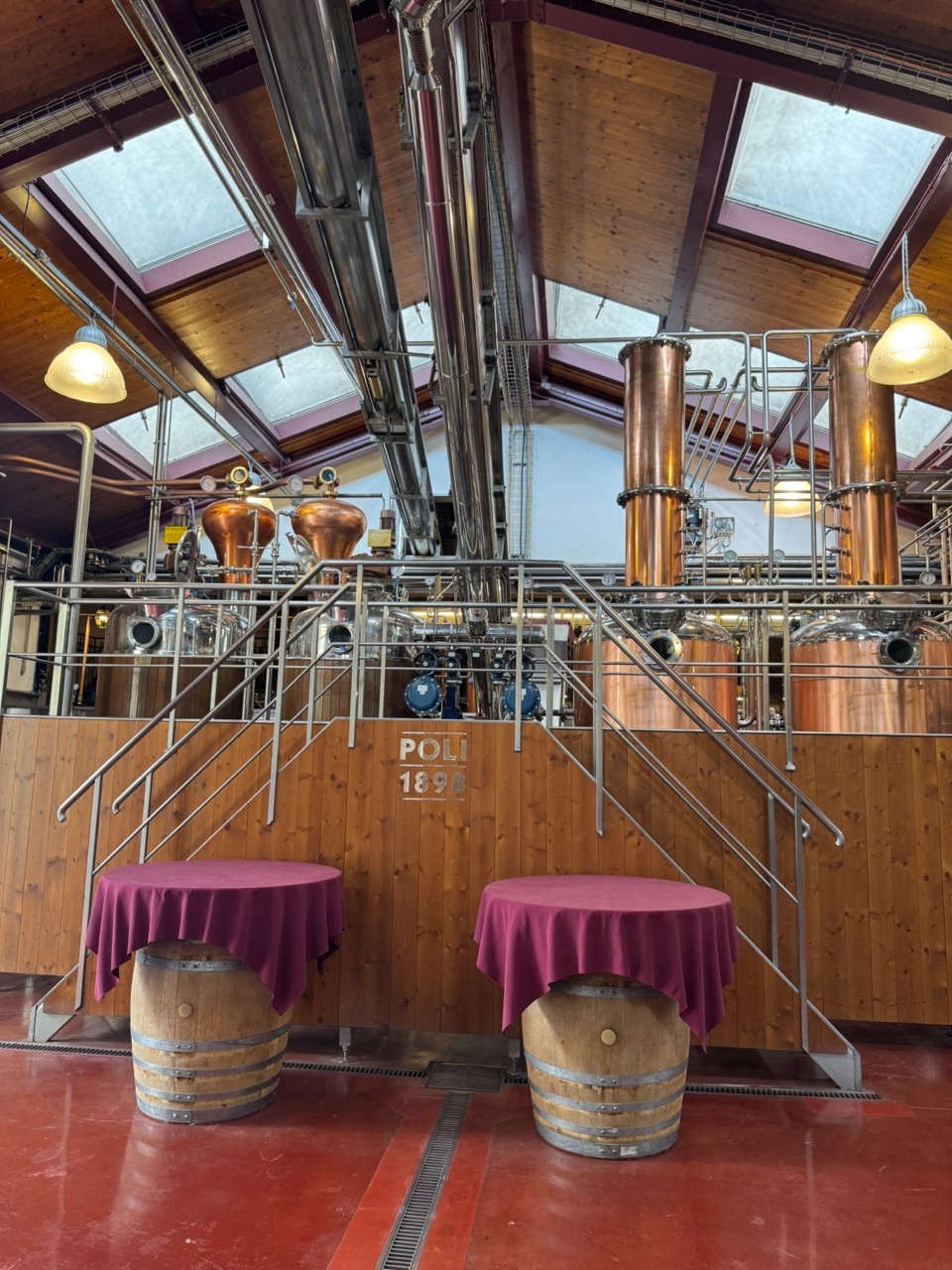
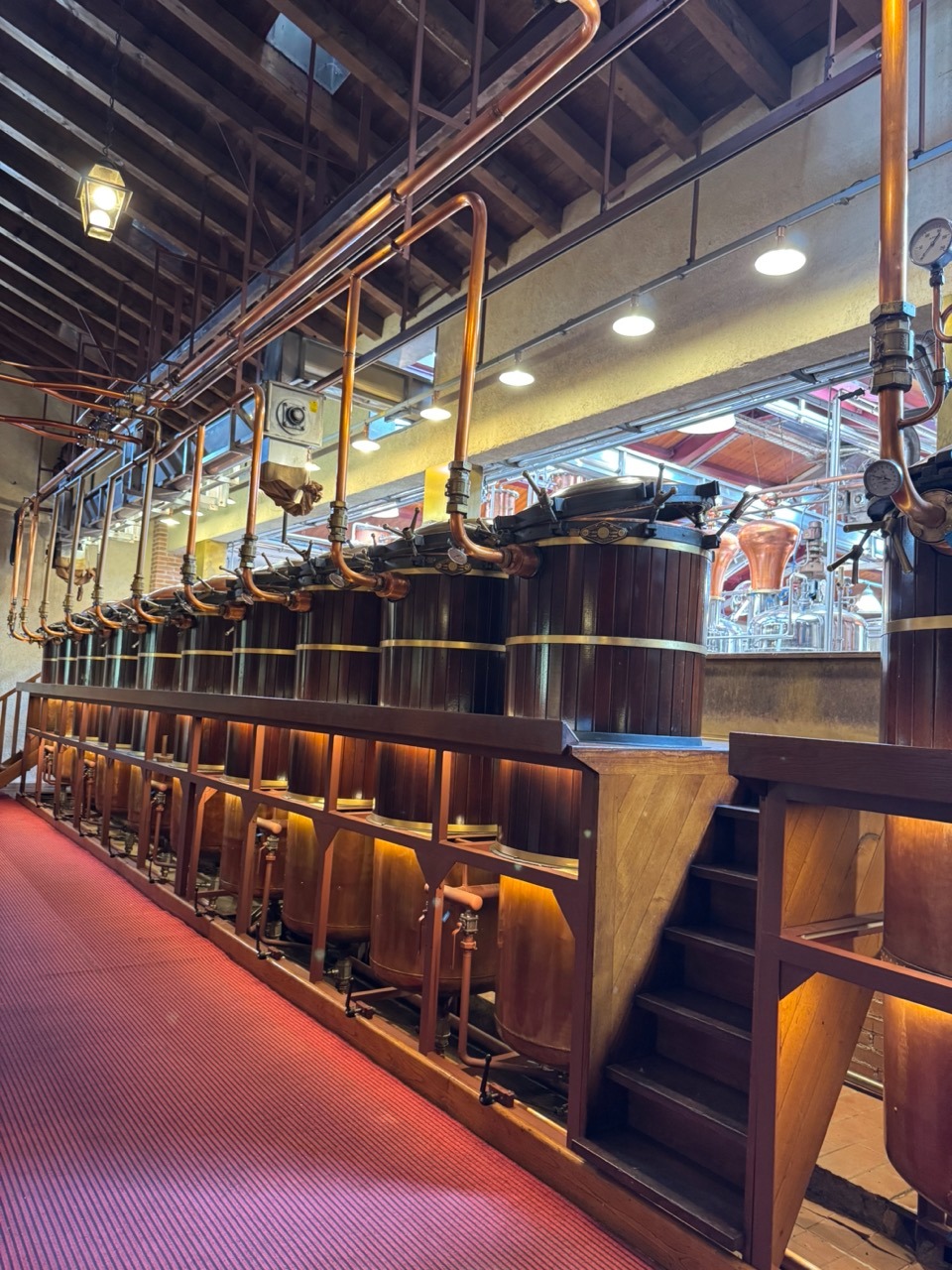
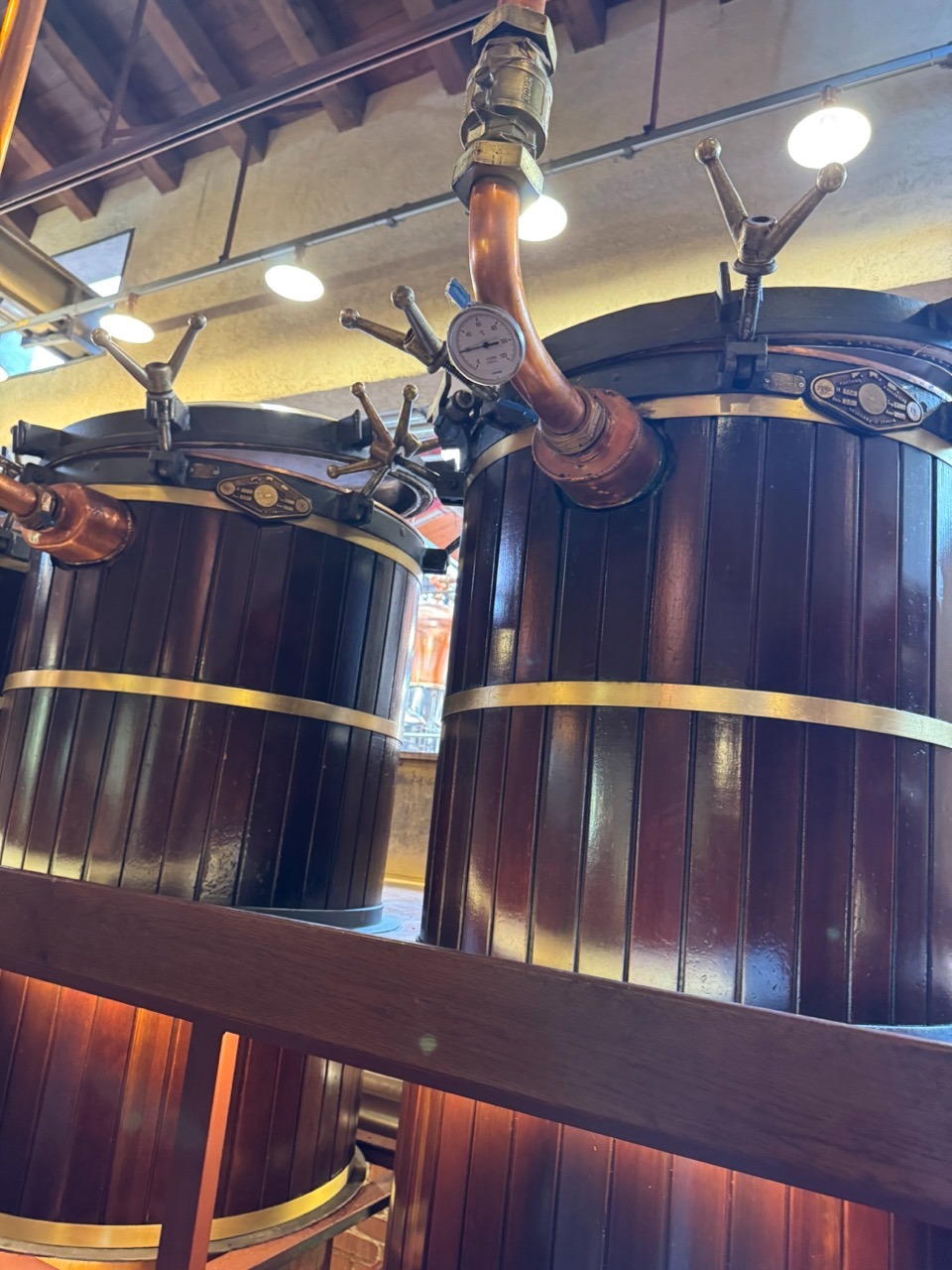
The Aging Process
Upstairs, young grappa matures in stainless silos. Though drinkable right off the still, a further aging period enhances roundness and harmony.
Downstairs, you’re hit by intense aromas. To be labeled “aged,” a grappa must rest at least 12 months in wood. These first-year barrel rooms are locked and under government control to prevent early transfers. Beyond that lies the open aging room, a space for experimentation where barrels and scents share evolving stories.
Though we can’t send the room’s scent, a visit is enough to engage all the senses.
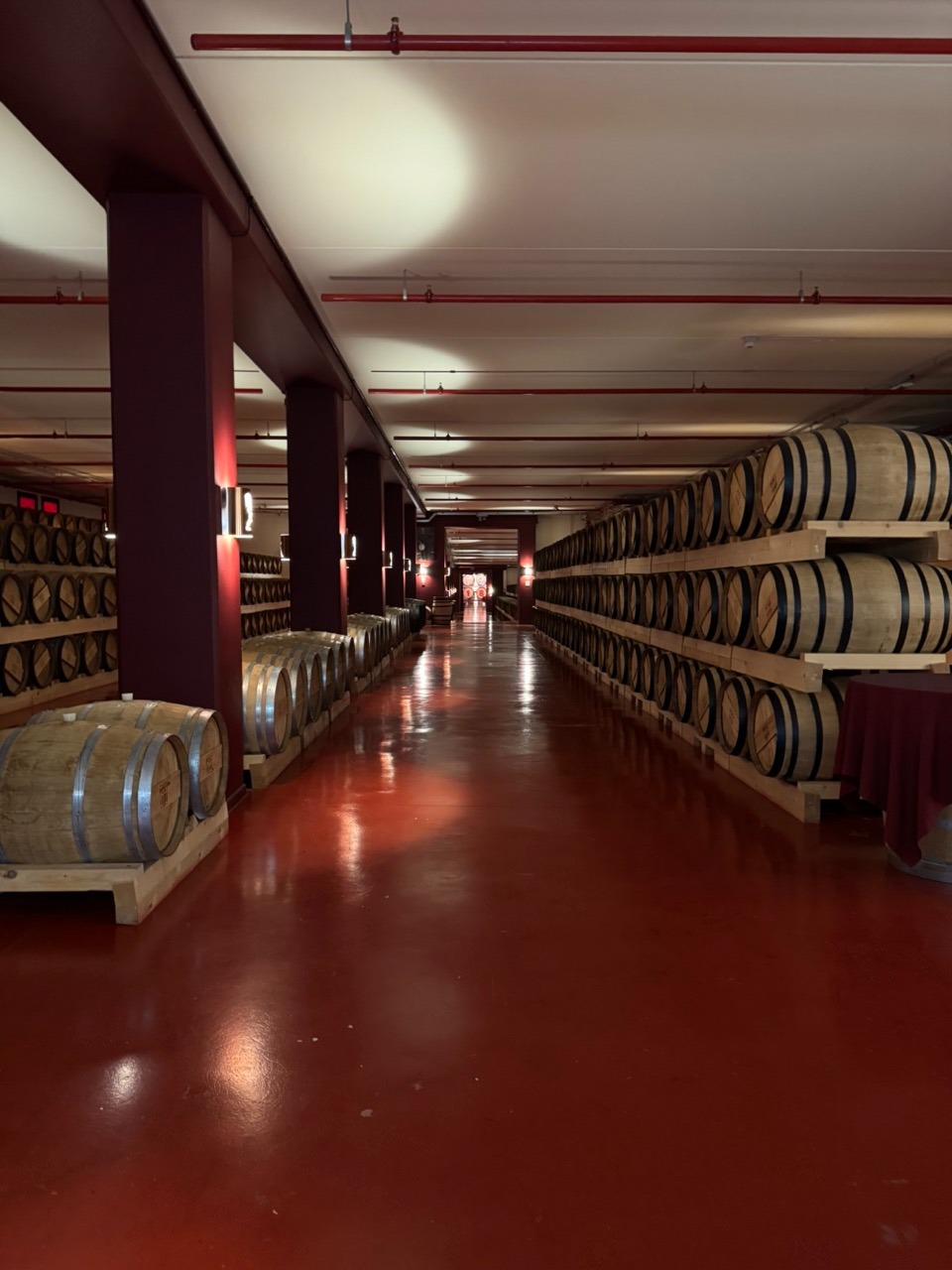
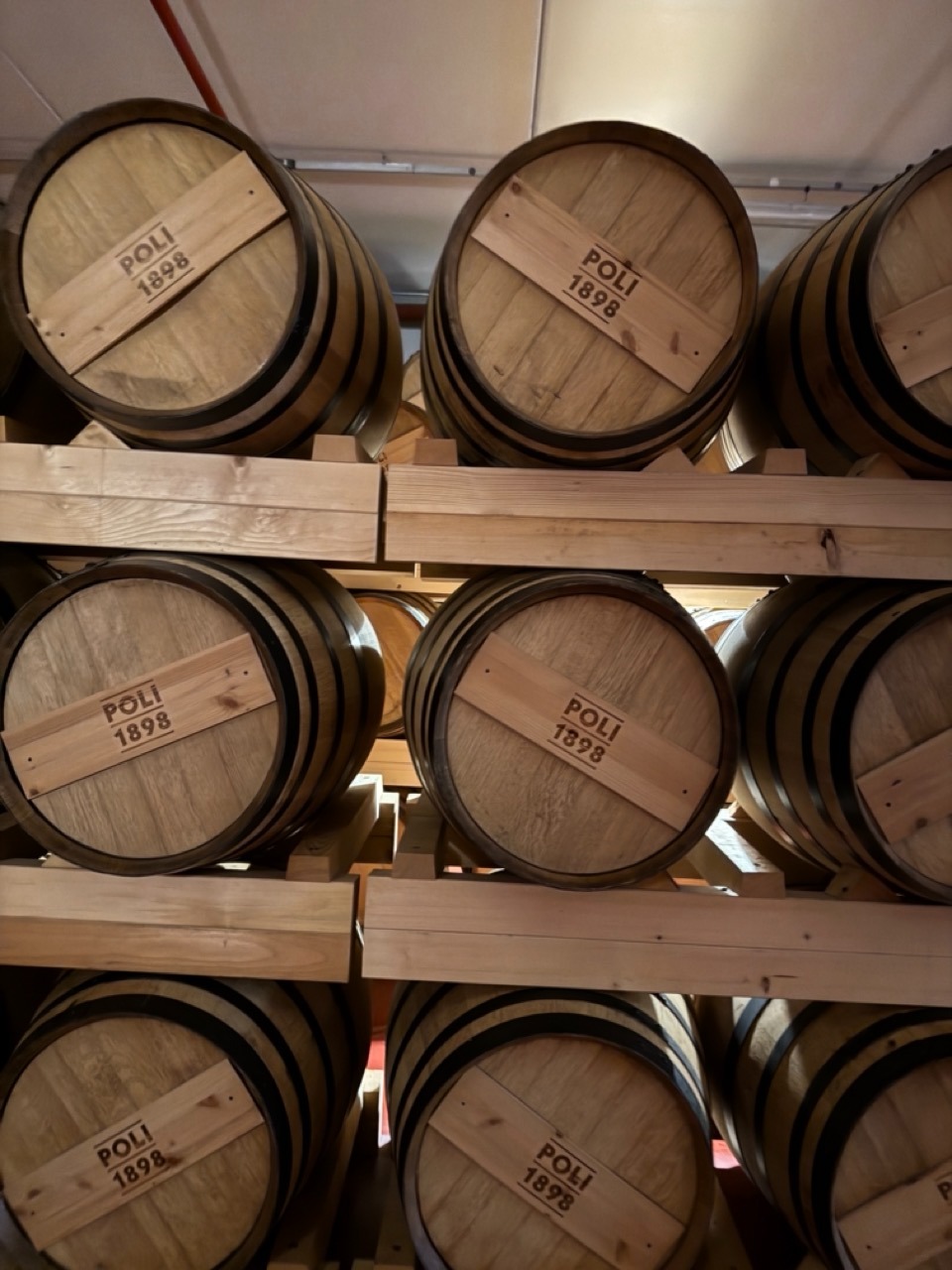
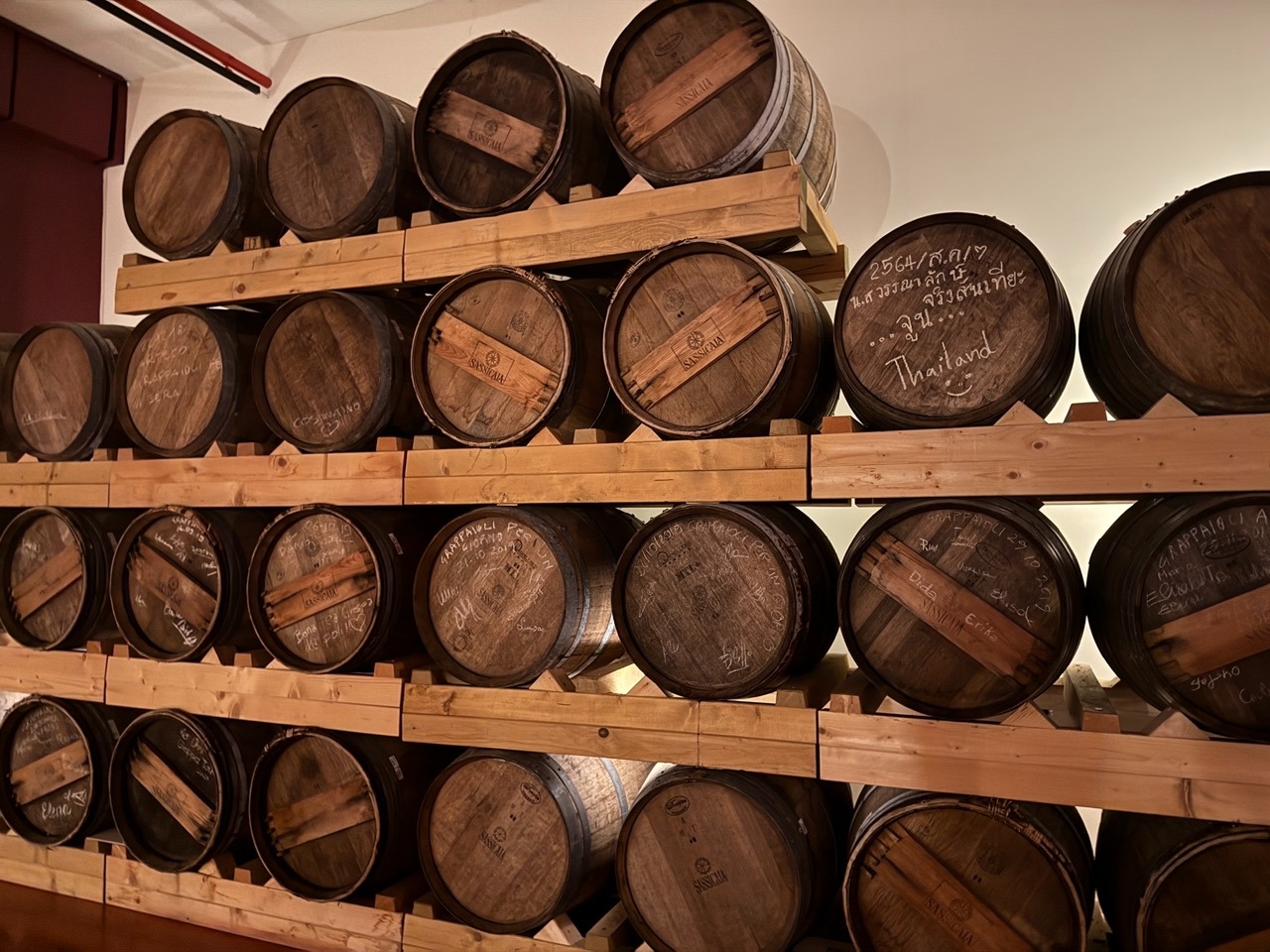
Tasting
After your tour, you can taste Poli’s products in a warm, well-appointed tasting room.
Poli remains a fully family-run enterprise, steadfast in its commitment to quality, craftsmanship, and innovation—even as it has grown. Behind every bottle lies a story, often fascinating. You can read or hear some of them straight from Jacopo Poli on the official website:
👉 www.poligrappa.com/eng/products#/
Don’t stop at the grappa—there are amari, liqueurs, and aperitivi of exceptional character to explore. In this section, however, we focus solely on grappa—the real one, the one that speaks of land and tradition.
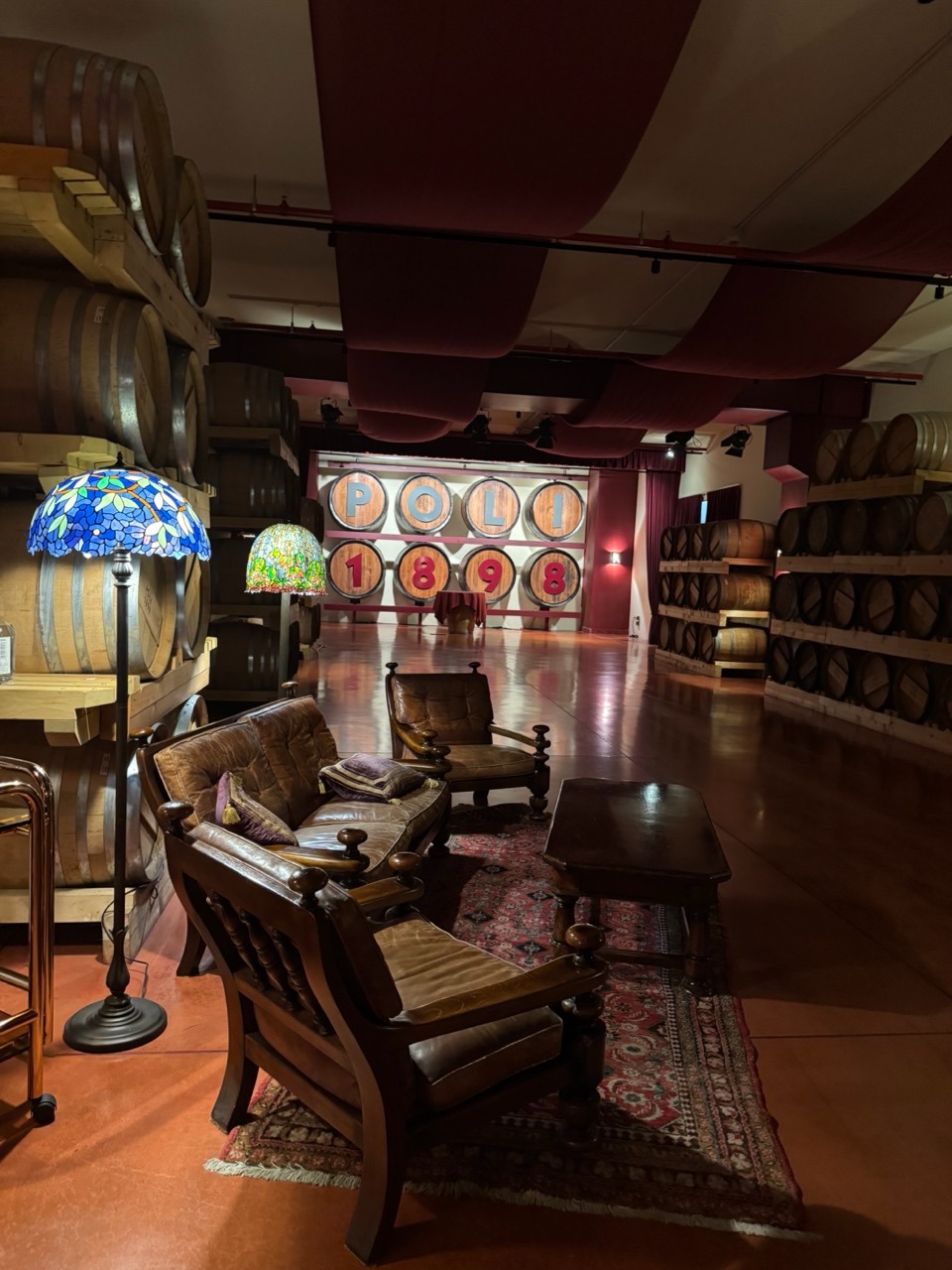
Where to Start: A Beginner’s Grappa Guide
I wanted to describe every grappa I sampled—each one deserved it—but that would be too lengthy. Besides, grappa, like wine, needs to be tasted to be truly known.
We decided to answer the question:
“If I’m new to grappa, which ones should I try?”
We chose six labels representing the dual spirit of Poli: traditional and innovative.
・Two young
・Two aged
・Two special
The Young
Sarpa di Poli – Tradition
Perhaps the most iconic Poli grappa. “Sarpa” means pomace in Venetian dialect. This is the definition of grappa: a blend of Cabernet and Merlot. Clean, honest, with herbal and winey notes that evoke fresh pomace.
For me, this is grappa—rude, pure, and straightforward.
Po’ Morbida – Delicacy
From the monovarietal Po di Poli line, this is made from Moscato grapes. Silky and embracing, it offers floral and citrus notes and is distilled in a water bath to preserve subtle aromas.
Tasting it is like lying in an orchard on a sunlit day.
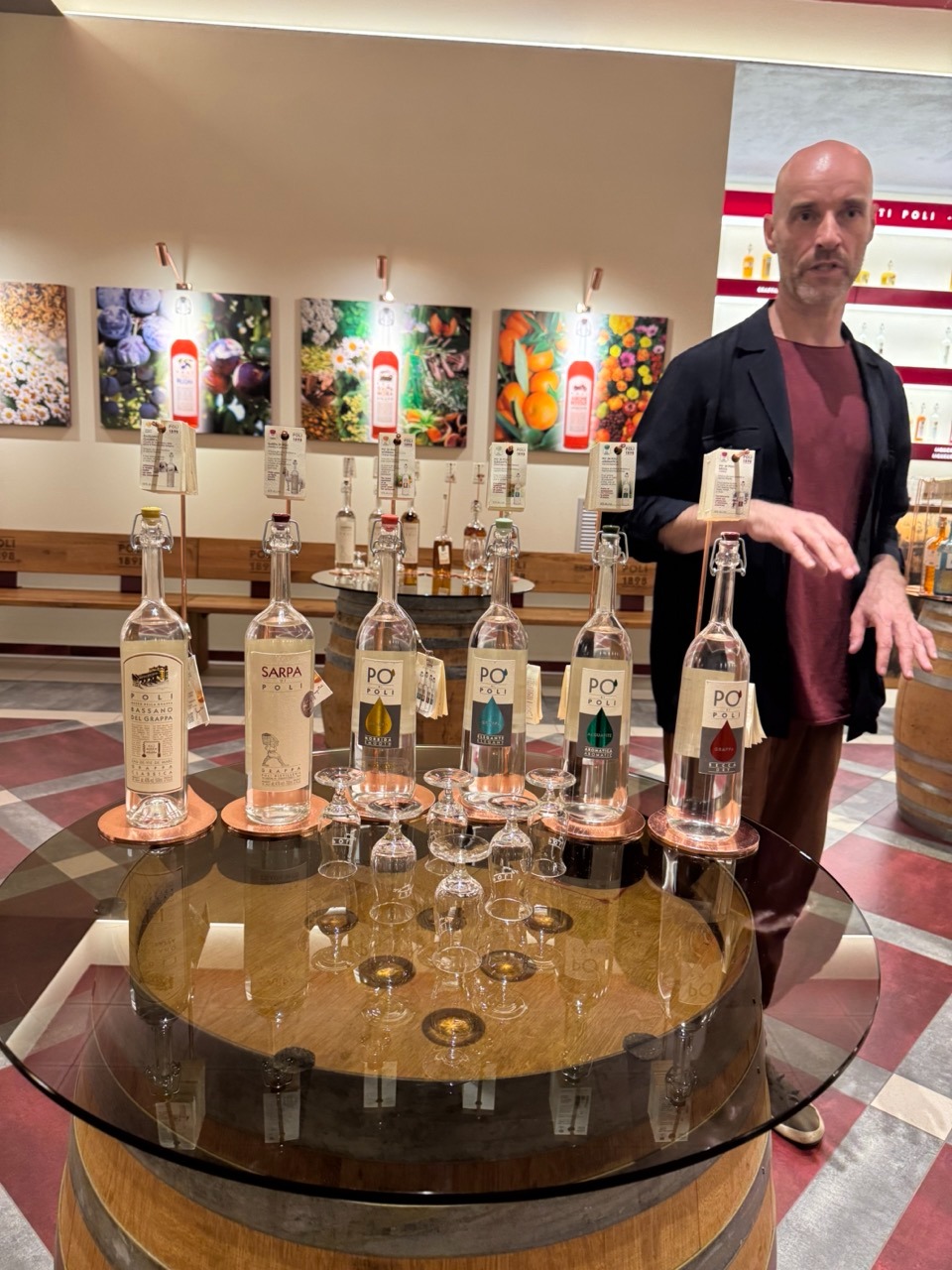
The Aged
Sarpa Oro – Wisdom
This is simply Sarpa white aged in French oak barriques. Through maturation, it loses youthful intensity and gains complexity, warmth, and exotic spice notes. A classic Italian barricaded grappa and a perfect entry point to aged grappas.
Cleopatra Amarone – Alchemy
Distilled using the innovative Crysopea still (vacuum water bath), preserving the full flavor essence of the pomace. Named for Cleopatra—supposedly the first to build a still to distill gold (“chrysos” = gold, “poiein” = to make). Even after a year in the barrel, it retains bright red fruit notes balanced by dried fruit. A blend of power and elegance—ideal for enjoying reclined on a sofa like an old Roman.
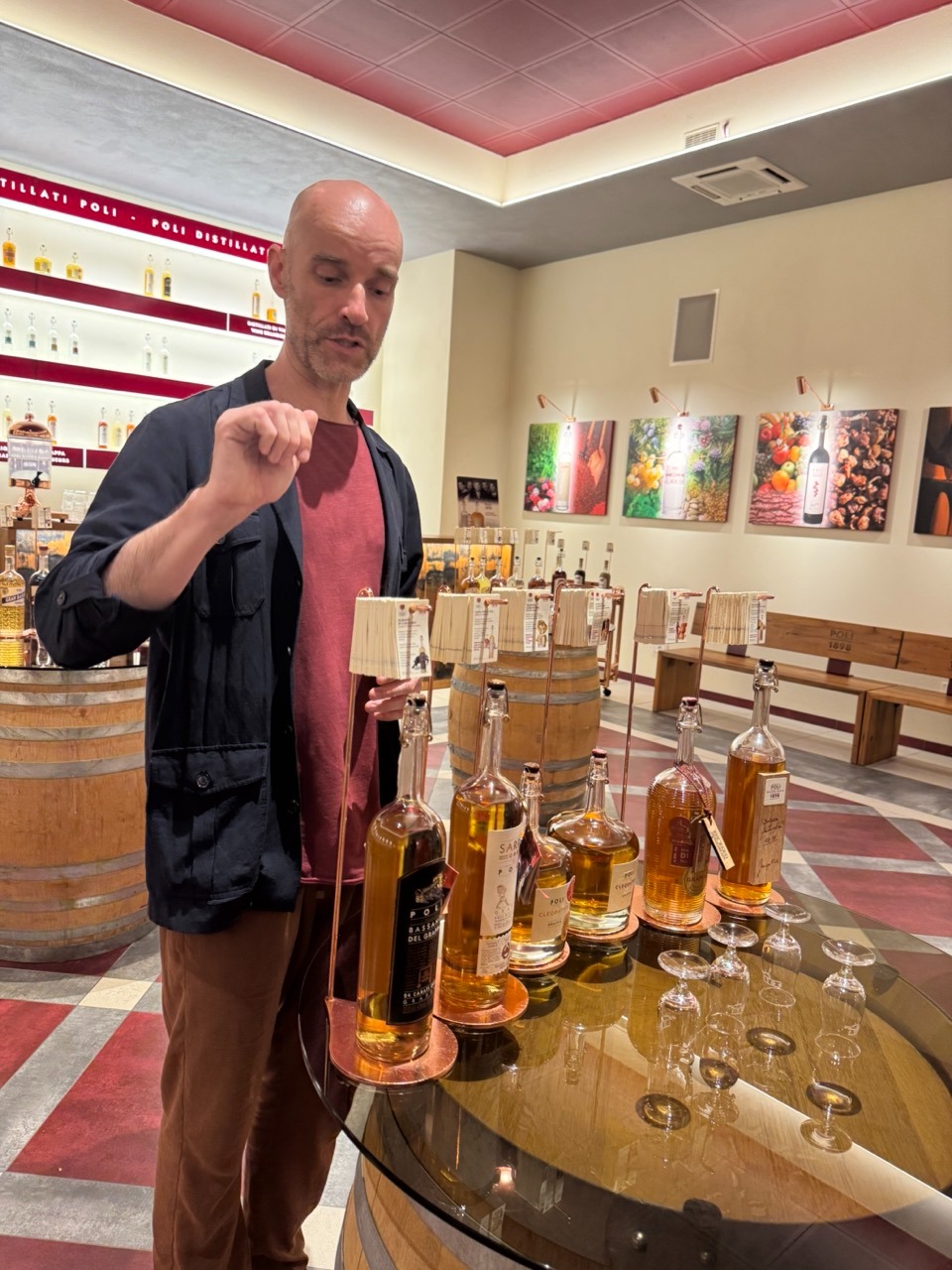
The Special
Grappa di Sassicaia – The Majestic
First tasted during a distillery visit, it left me speechless. Complex, elegant, utterly unique. Made from Cabernet Sauvignon and Franc pomace from Tenuta San Guido’s Sassicaia, aged in the same wine barrels. Dry, tannic, and spicy—a grappa of grandeur.
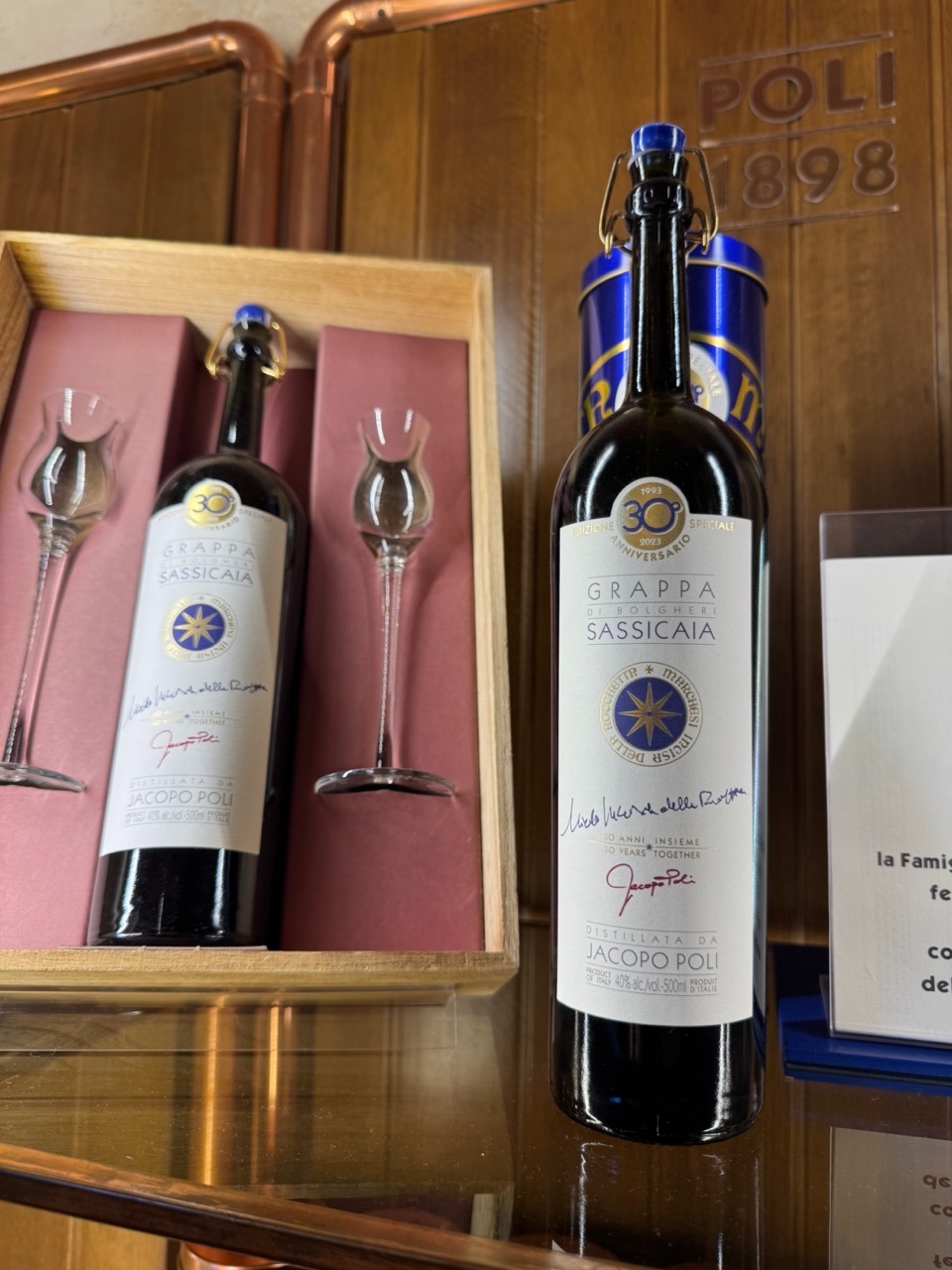
Amorosa di Settembre – The Poetic
As the name suggests, a romantic grappa that enchants. Made from Vespaiola grapes, native to the Breganze hills, just few kilometers from Poli distillery, harvested at peak ripeness in September. One of Poli’s first monovarietals and a true symbol of territorial identity.
It is soft, fragrant, with honeyed warmth and yellow fruit notes. Drinking it feels like walking through vineyards at harvest’s end, under a low sun warming your skin.
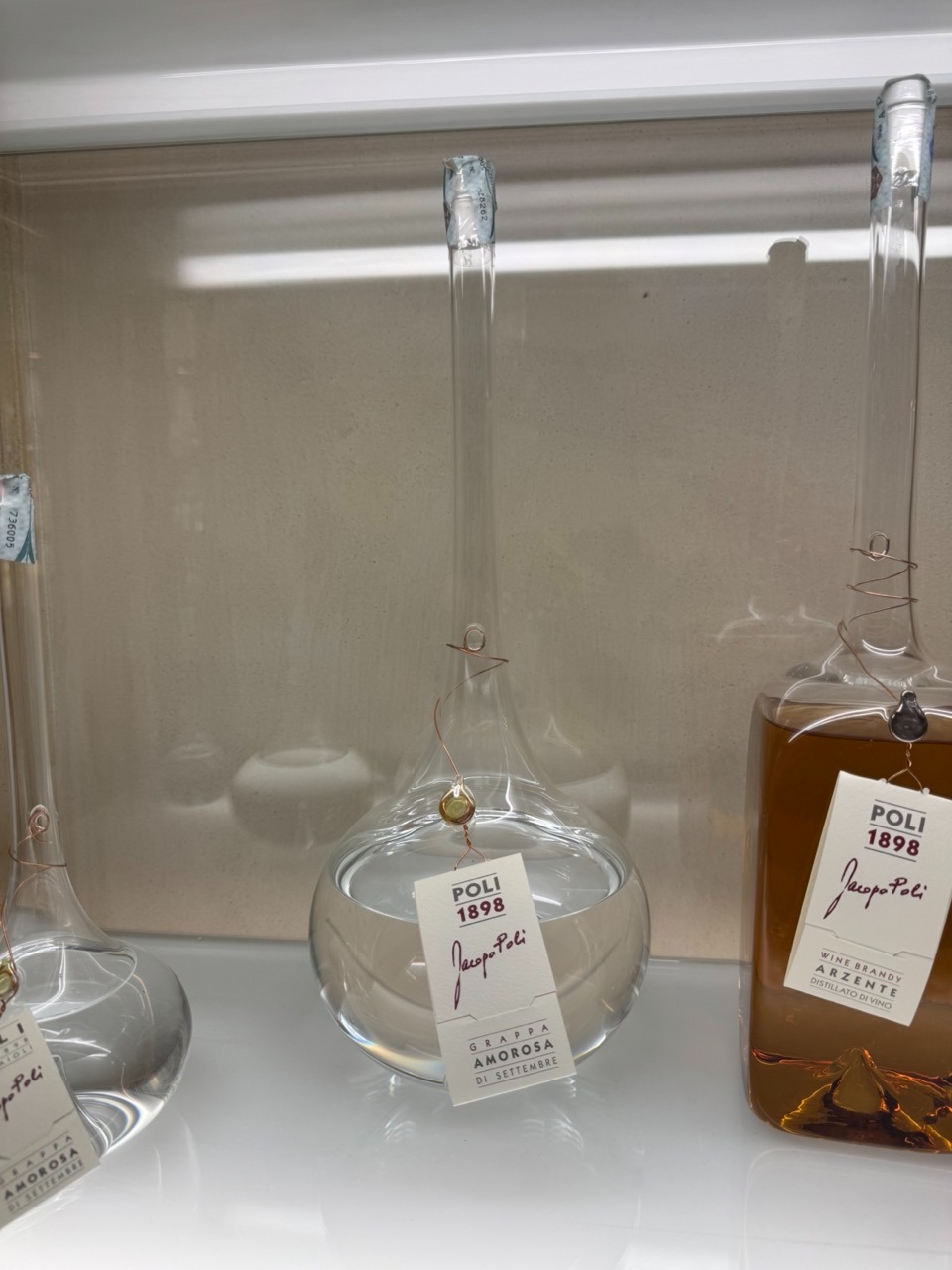
One Extra Tip: Poli-chromy
One of the smartest—and most helpful—ideas we found at the distillery is Poli-chromy: a simple yet effective system to guide visitors in choosing the right grappa.
Each grappa is categorized by its aromatic profile and flavor, identified by the color of its cap.
This way, even beginners can quickly find their way based on personal taste, and experienced drinkers can easily recognize the grappas they’re most likely to enjoy.
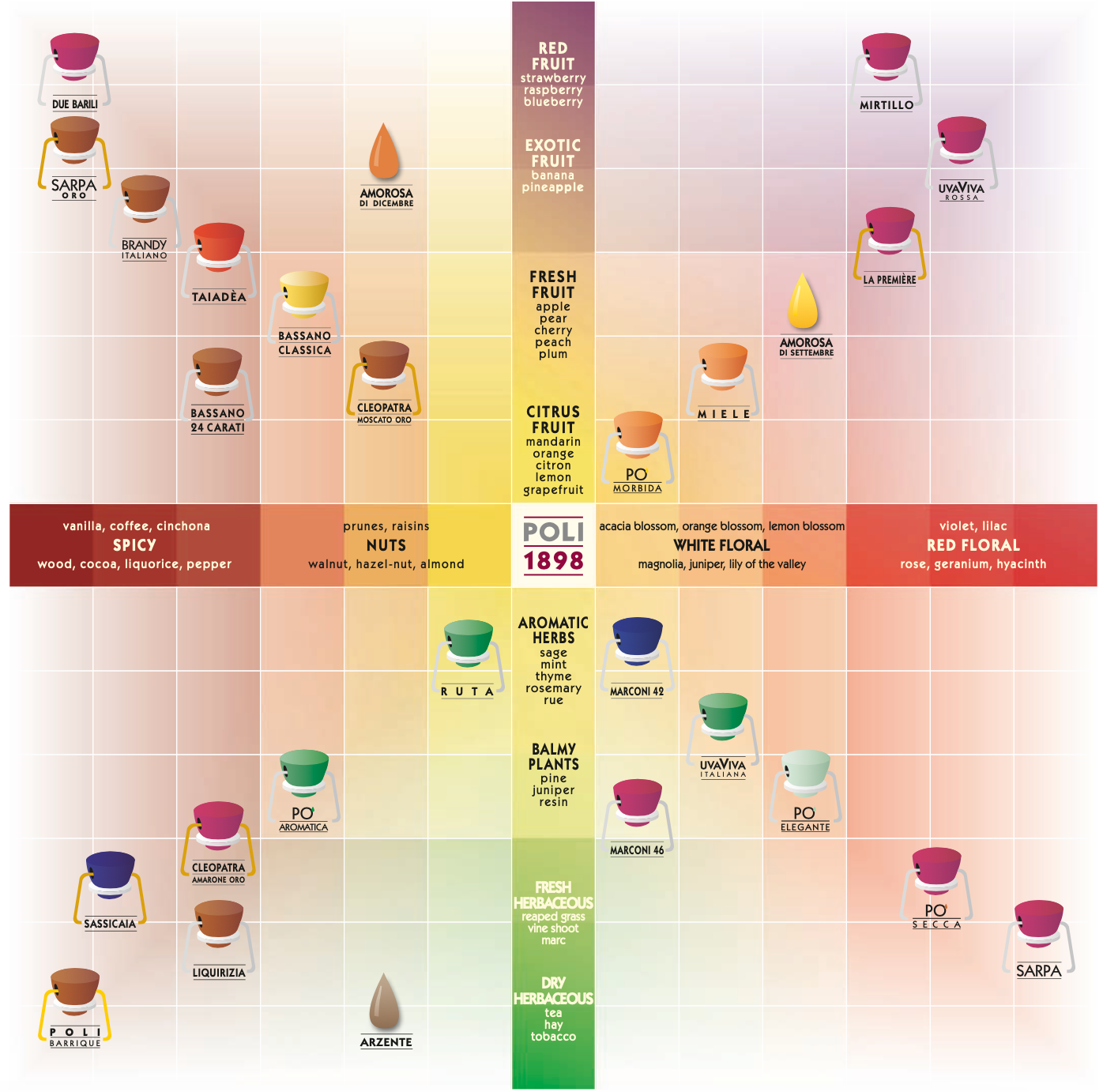
Poli Distillery

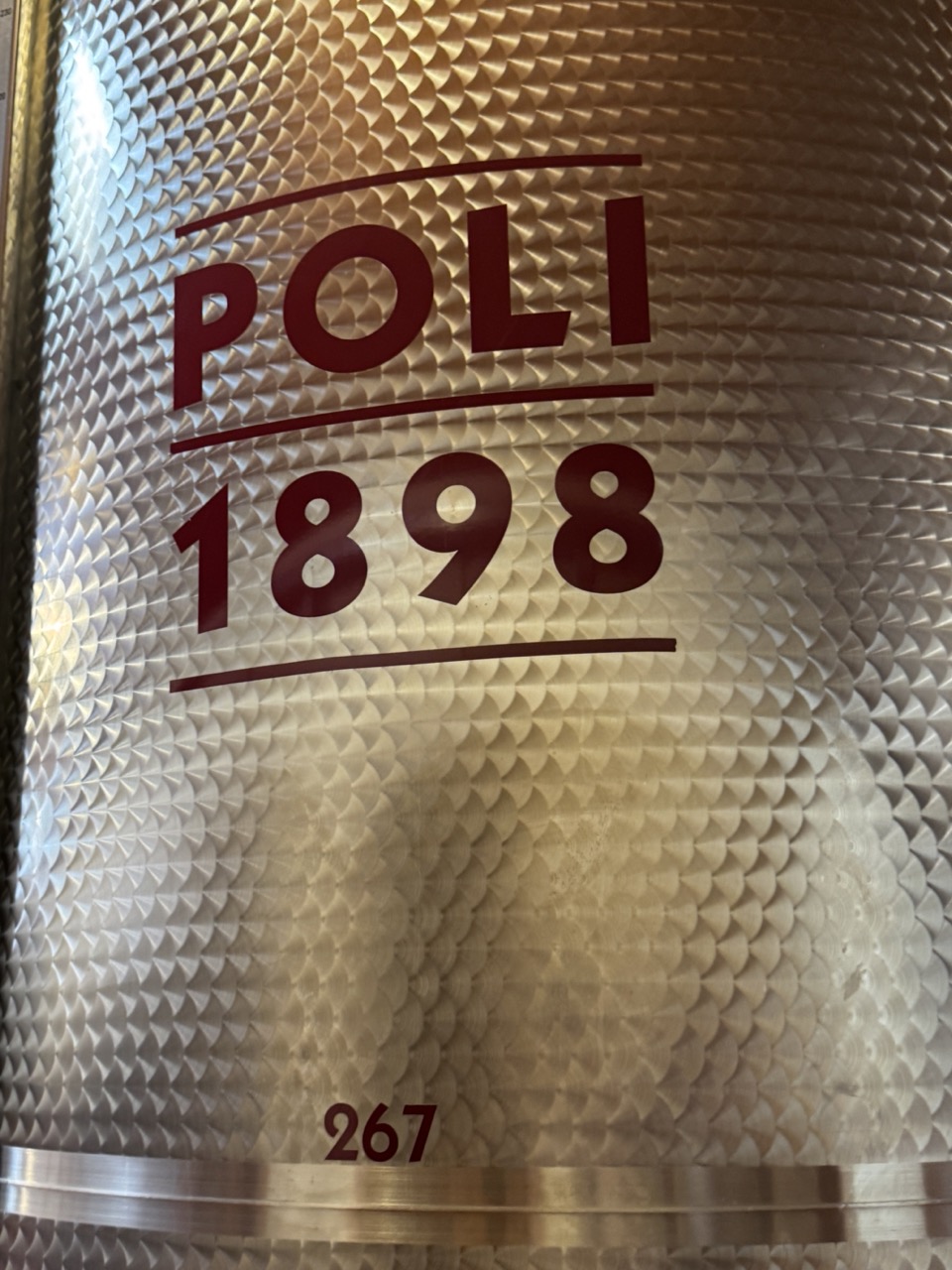

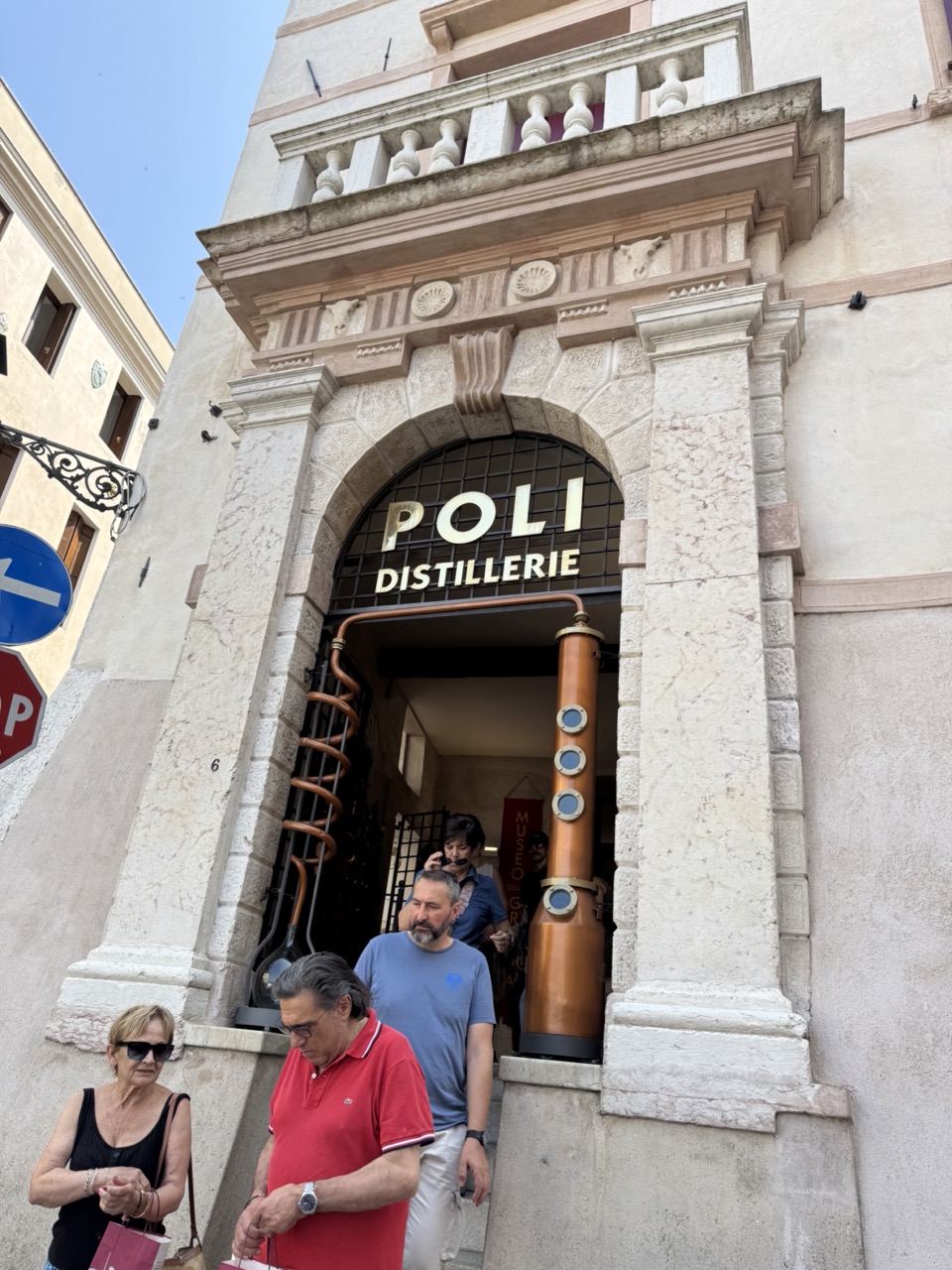




square.jpg)


